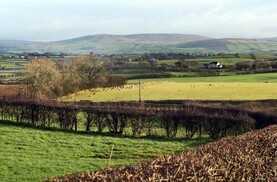The Test and Vaccinate or Remove (TVR) badger research project in Co Down cost £4.5m over its five-year duration, significantly less than the original £7.5m budget, a report published by DAERA shows.
The fifth and final year of the project was completed in October 2018. It involved capturing badgers in a bovine TB hotspot area around Banbridge. Badgers were tested for bovine TB and test-negative badgers were microchipped, injected with a TB vaccine and released. Badgers that tested positive were culled and removed for post-mortem. In the fifth year of the project 341 badgers were captured between April and October, while a further 440 repeat captures were also recorded. The numbers captured were up 19% on 2017 levels, with DAERA stating that drought conditions last year could have encouraged more badgers into traps in search of food.
No results from the study have been published since it began in 2014 and the first results are to be made available from late 2019 onwards.
The aims of the project include building data on TB rates, testing and movements of badgers. The DAERA report also states that it has provided information on “logistical issues and costs relating to the large-scale implementation of any future wildlife intervention strategy”.
Read more
NI badger study results to be published
Wildlife causes 25% of TB breakdowns
The Test and Vaccinate or Remove (TVR) badger research project in Co Down cost £4.5m over its five-year duration, significantly less than the original £7.5m budget, a report published by DAERA shows.
The fifth and final year of the project was completed in October 2018. It involved capturing badgers in a bovine TB hotspot area around Banbridge. Badgers were tested for bovine TB and test-negative badgers were microchipped, injected with a TB vaccine and released. Badgers that tested positive were culled and removed for post-mortem. In the fifth year of the project 341 badgers were captured between April and October, while a further 440 repeat captures were also recorded. The numbers captured were up 19% on 2017 levels, with DAERA stating that drought conditions last year could have encouraged more badgers into traps in search of food.
No results from the study have been published since it began in 2014 and the first results are to be made available from late 2019 onwards.
The aims of the project include building data on TB rates, testing and movements of badgers. The DAERA report also states that it has provided information on “logistical issues and costs relating to the large-scale implementation of any future wildlife intervention strategy”.
Read more
NI badger study results to be published
Wildlife causes 25% of TB breakdowns






 This is a subscriber-only article
This is a subscriber-only article










SHARING OPTIONS: